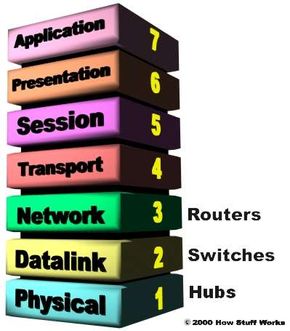Routers and Layer 3 Switching
While most switches operate at the Data layer (Layer 2) of the OSI Reference Model, some incorporate features of a router and operate at the Network layer (Layer 3) as well. In fact, a Layer 3 switch is incredibly similar to a router.
When a router receives a packet, it looks at the Layer 3 source and destination addresses to determine the path the packet should take. A standard switch relies on the MAC addresses to determine the source and destination of a packet, which is Layer 2 (Data) networking.
Advertisement
The fundamental difference between a router and a Layer 3 switch is that Layer 3 switches have optimized hardware to pass data as fast as Layer 2 switches, yet they make decisions on how to transmit traffic at Layer 3, just like a router. Within the LAN environment, a Layer 3 switch is usually faster than a router because it is built on switching hardware. In fact, many of Cisco's Layer 3 switches are actually routers that operate faster because they are built on "switching" hardware with customized chips inside the box.
The pattern matching and caching on Layer 3 switches is similar to the pattern matching and caching on a router. Both use a routing protocol and routing table to determine the best path. However, a Layer 3 switch has the ability to reprogram the hardware dynamically with the current Layer 3 routing information. This is what allows for faster packet processing.
On current Layer 3 switches, the information received from the routing protocols is used to update the hardware caching tables.
